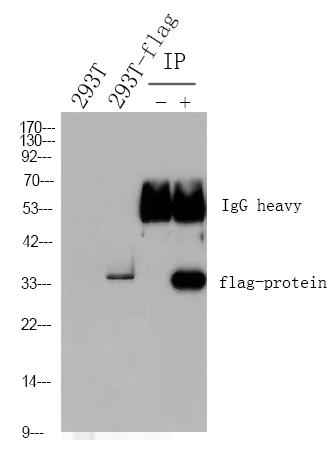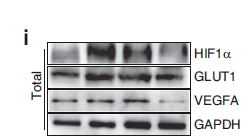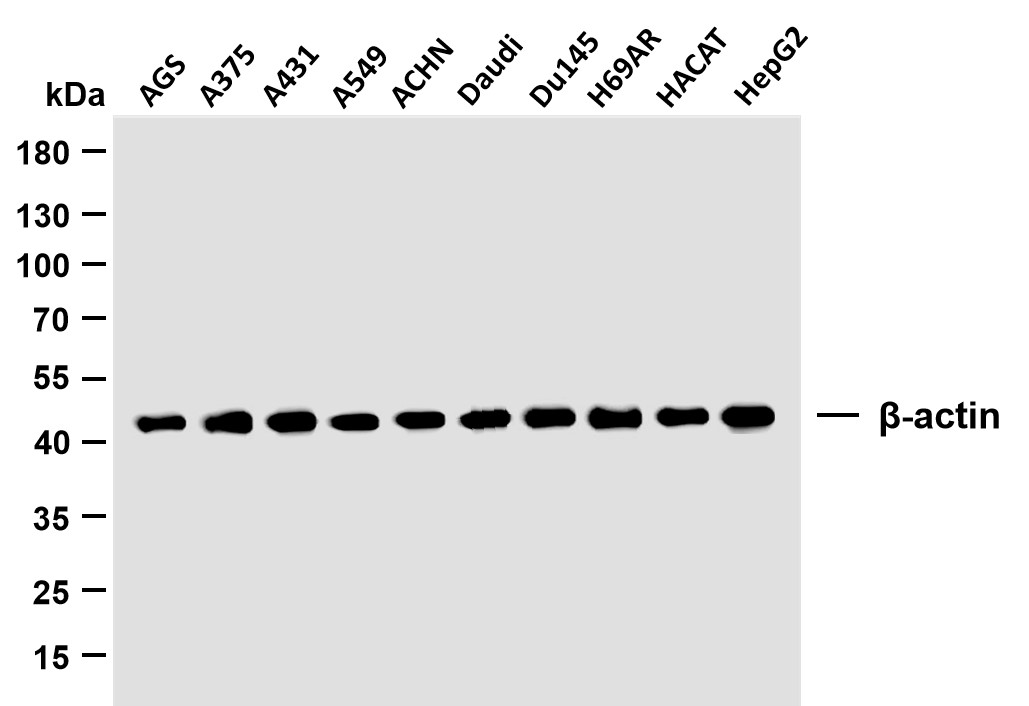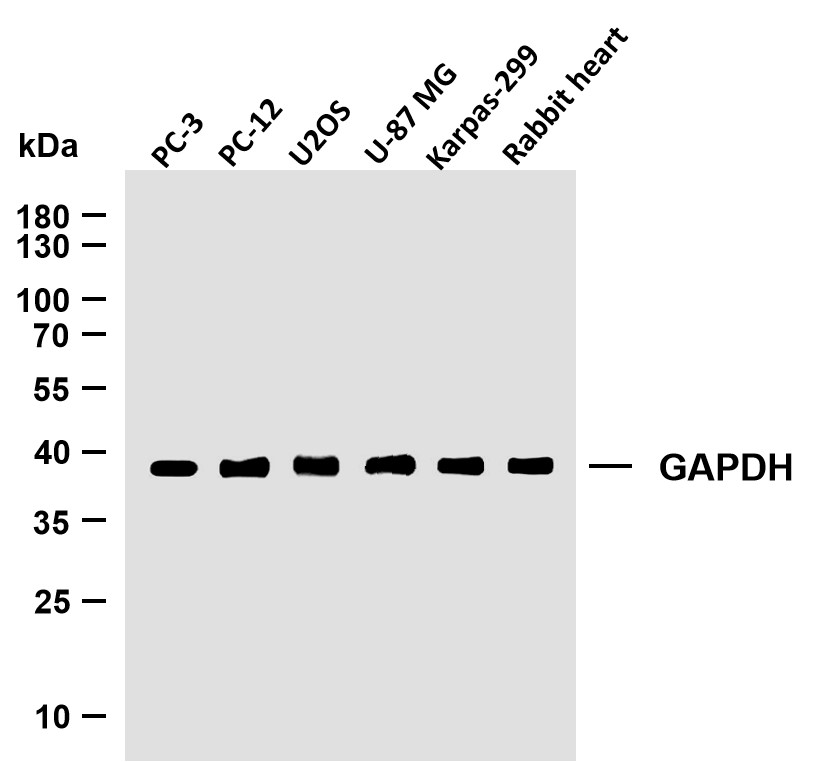
Catalog: YT5048
Size
Price
Status
Qty.
200μL
$450.00
In stock
0
100μL
$280.00
In stock
0
40μL
$150.00
In stock
0
Add to cart


Collected


Collect
Conjugated antibody
α-tubulin (8F11) Mouse mAb (AbFluor 350)
α-tubulin (8F11) Mouse mAb (AbFluor 405)
α-tubulin (8F11) Mouse mAb (AbFluor 488)
α-tubulin (8F11) Mouse mAb (AbFluor 555)
α-tubulin (8F11) Mouse mAb (AbFluor 594)
α-tubulin (8F11) Mouse mAb (AbFluor 647)
α-tubulin (8F11) Mouse mAb (AbFluor 680)
α-tubulin (8F11) Mouse mAb (Biotin)
α-tubulin (8F11) Mouse mAb (Cy3)
α-tubulin (8F11) Mouse mAb (Cy5)
α-tubulin (8F11) Mouse mAb (FITC)
α-tubulin (8F11) Mouse mAb (HRP)
Main Information
Target
Adrenergic Receptor β2
Host Species
Rabbit
Reactivity
Human, Mouse, Rat
Applications
WB, ELISA
MW
46kD (Observed)
Conjugate/Modification
Unmodified
Detailed Information
Recommended Dilution Ratio
WB 1:500-1:2000; ELISA 1:5000; Not yet tested in other applications.
Formulation
Liquid in PBS containing 50% glycerol, 0.5% BSA and 0.02% sodium azide.
Specificity
AR-β2 Polyclonal Antibody detects endogenous levels of AR-β2 protein.
Purification
The antibody was affinity-purified from rabbit antiserum by affinity-chromatography using epitope-specific immunogen.
Storage
-15°C to -25°C/1 year(Do not lower than -25°C)
Concentration
1 mg/ml
MW(Observed)
46kD
Modification
Unmodified
Clonality
Polyclonal
Isotype
IgG
Related Products
Antigen&Target Information
Immunogen:
Synthesized peptide derived from AR-β2 . at AA range: 300-380
show all
Specificity:
AR-β2 Polyclonal Antibody detects endogenous levels of AR-β2 protein.
show all
Gene Name:
ADRB2
show all
Protein Name:
Beta-2 adrenergic receptor
show all
Other Name:
ADRB2 ;
ADRB2R ;
B2AR ;
Beta-2 adrenergic receptor ;
Beta-2 adrenoreceptor ;
Beta-2 adrenoceptor
ADRB2R ;
B2AR ;
Beta-2 adrenergic receptor ;
Beta-2 adrenoreceptor ;
Beta-2 adrenoceptor
show all
Background:
This gene encodes beta-2-adrenergic receptor which is a member of the G protein-coupled receptor superfamily. This receptor is directly associated with one of its ultimate effectors, the class C L-type calcium channel Ca(V)1.2. This receptor-channel complex also contains a G protein, an adenylyl cyclase, cAMP-dependent kinase, and the counterbalancing phosphatase, PP2A. The assembly of the signaling complex provides a mechanism that ensures specific and rapid signaling by this G protein-coupled receptor. This gene is intronless. Different polymorphic forms, point mutations, and/or downregulation of this gene are associated with nocturnal asthma, obesity and type 2 diabetes. [provided by RefSeq, Jul 2008],
show all
Function:
Disease:Polymorphic forms of ADRB2 could impart some form of nocturnal asthma.,Function:Beta-adrenergic receptors mediate the catecholamine-induced activation of adenylate cyclase through the action of G proteins. The beta-2-adrenergic receptor binds epinephrine with an approximately 30-fold greater affinity than it does norepinephrine.,PTM:Palmitoylated; may reduce accessibility of Ser-345 and Ser-346 by anchoring Cys-341 to the plasma membrane. Agonist stimulation promotes depalmitoylation and further allows Ser-345 and Ser-346 phosphorylation.,PTM:Phosphorylated by PKA and BARK upon agonist stimulation, which mediates homologous desensitization of the receptor. PKA-mediated phosphorylation seems to facilitate phosphorylation by BARK. Phosphorylated upon DNA damage, probably by ATM or ATR.,PTM:Phosphorylation of Tyr-141 is induced by insulin and leads to supersensitization of the receptor.,similarity:Belongs to the G-protein coupled receptor 1 family.,subunit:Binds SLC9A3R1 and GPRASP1.,
show all
Cellular Localization:
Cell membrane ; Multi-pass membrane protein . Early endosome . Golgi apparatus . Colocalizes with VHL at the cell membrane (PubMed:19584355). Activated receptors are internalized into endosomes prior to their degradation in lysosomes (PubMed:20559325). Activated receptors are also detected within the Golgi apparatus (PubMed:27481942). .
show all
Tissue Expression:
Blood,Brain,Fetal brain,Heart,Leukocyte,Prostate,Thyroid,
show all
Research Areas:
>>Calcium signaling pathway ;
>>cGMP-PKG signaling pathway ;
>>cAMP signaling pathway ;
>>Neuroactive ligand-receptor interaction ;
>>Adrenergic signaling in cardiomyocytes ;
>>Regulation of lipolysis in adipocytes ;
>>Renin secretion ;
>>Salivary secretion ;
>>Chemical carcinogenesis - receptor activation
>>cGMP-PKG signaling pathway ;
>>cAMP signaling pathway ;
>>Neuroactive ligand-receptor interaction ;
>>Adrenergic signaling in cardiomyocytes ;
>>Regulation of lipolysis in adipocytes ;
>>Renin secretion ;
>>Salivary secretion ;
>>Chemical carcinogenesis - receptor activation
show all
Signaling Pathway
Organismal Systems >> Circulatory system >> Adrenergic signaling in cardiomyocytes
Environmental Information Processing >> Signal transduction >> Calcium signaling pathway
Environmental Information Processing >> Signal transduction >> cAMP signaling pathway
Environmental Information Processing >> Signal transduction >> cGMP-PKG signaling pathway
Reference Citation({{totalcount}})
Catalog: YT5048
Size
Price
Status
Qty.
200μL
$450.00
In stock
0
100μL
$280.00
In stock
0
40μL
$150.00
In stock
0
Add to cart


Collected


Collect
Conjugated antibody
α-tubulin (8F11) Mouse mAb (AbFluor 350)
α-tubulin (8F11) Mouse mAb (AbFluor 405)
α-tubulin (8F11) Mouse mAb (AbFluor 488)
α-tubulin (8F11) Mouse mAb (AbFluor 555)
α-tubulin (8F11) Mouse mAb (AbFluor 594)
α-tubulin (8F11) Mouse mAb (AbFluor 647)
α-tubulin (8F11) Mouse mAb (AbFluor 680)
α-tubulin (8F11) Mouse mAb (Biotin)
α-tubulin (8F11) Mouse mAb (Cy3)
α-tubulin (8F11) Mouse mAb (Cy5)
α-tubulin (8F11) Mouse mAb (FITC)
α-tubulin (8F11) Mouse mAb (HRP)
Recently Viewed Products
Clear allPRODUCTS
CUSTOMIZED
ABOUT US
Toggle night Mode
{{pinfoXq.title || ''}}
Catalog: {{pinfoXq.catalog || ''}}
Filter:
All
{{item.name}}
{{pinfo.title}}
-{{pinfo.catalog}}
Main Information
Target
{{pinfo.target}}
Reactivity
{{pinfo.react}}
Applications
{{pinfo.applicat}}
Conjugate/Modification
{{pinfo.coupling}}/{{pinfo.modific}}
MW (kDa)
{{pinfo.mwcalc}}
Host Species
{{pinfo.hostspec}}
Isotype
{{pinfo.isotype}}
Product {{index}}/{{pcount}}
Prev
Next
{{pvTitle}}
Scroll wheel zooms the picture
{{pvDescr}}


















